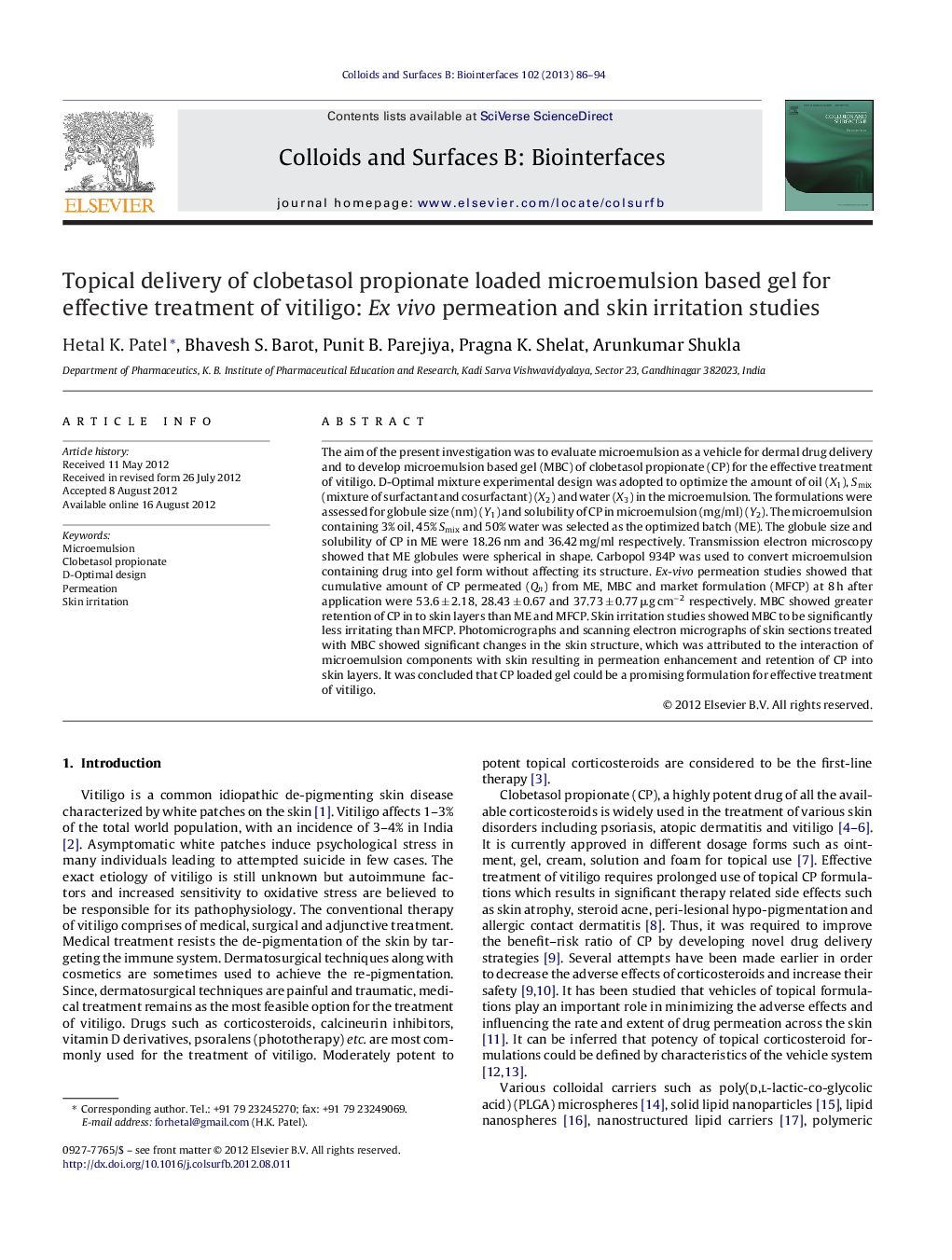| Article ID | Journal | Published Year | Pages | File Type |
|---|---|---|---|---|
| 600504 | Colloids and Surfaces B: Biointerfaces | 2013 | 9 Pages |
The aim of the present investigation was to evaluate microemulsion as a vehicle for dermal drug delivery and to develop microemulsion based gel (MBC) of clobetasol propionate (CP) for the effective treatment of vitiligo. D-Optimal mixture experimental design was adopted to optimize the amount of oil (X1), Smix (mixture of surfactant and cosurfactant) (X2) and water (X3) in the microemulsion. The formulations were assessed for globule size (nm) (Y1) and solubility of CP in microemulsion (mg/ml) (Y2). The microemulsion containing 3% oil, 45% Smix and 50% water was selected as the optimized batch (ME). The globule size and solubility of CP in ME were 18.26 nm and 36.42 mg/ml respectively. Transmission electron microscopy showed that ME globules were spherical in shape. Carbopol 934P was used to convert microemulsion containing drug into gel form without affecting its structure. Ex-vivo permeation studies showed that cumulative amount of CP permeated (Qn) from ME, MBC and market formulation (MFCP) at 8 h after application were 53.6 ± 2.18, 28.43 ± 0.67 and 37.73 ± 0.77 μg cm−2 respectively. MBC showed greater retention of CP in to skin layers than ME and MFCP. Skin irritation studies showed MBC to be significantly less irritating than MFCP. Photomicrographs and scanning electron micrographs of skin sections treated with MBC showed significant changes in the skin structure, which was attributed to the interaction of microemulsion components with skin resulting in permeation enhancement and retention of CP into skin layers. It was concluded that CP loaded gel could be a promising formulation for effective treatment of vitiligo.
Graphical abstractFigure optionsDownload full-size imageDownload as PowerPoint slideHighlights► Microemulsion based gel (MBC) of clobetasol propionate (CP) was formulated. ► The concentration of microemulsion components were optimized using D-optimal mixture design. ► MBC showed no irritation potential on the rabbit skin. ► MBC was able to penetrate and retain in the upper skin layers. ► MBC could be a promising formulation for effective treatment of vitiligo.
